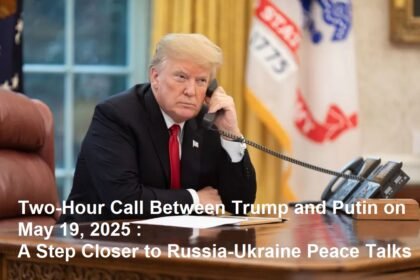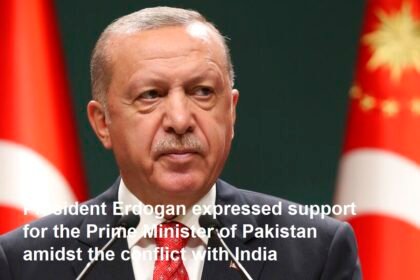On Saturday, May 10, 2025, Indian Prime Minister Narendra Modi convened a high-level meeting with top military and defense officials amid escalating tensions and ongoing conflict with Pakistan. This critical gathering took place at the Prime Minister’s residence in New Delhi and included key figures such as Union Defence Minister Rajnath Singh, National Security Advisor Ajit Doval, Chief of Defence Staff (CDS) General Anil Chauhan, and the chiefs of the Indian Army, Navy, and Air Force. The meeting was convened to assess the rapidly evolving security situation following a series of military engagements between India and Pakistan, including recent Indian strikes on Pakistani airbases and Pakistan’s retaliatory actions.
Context of the Conflict
The India-Pakistan conflict has a long and complex history, primarily centered around the disputed Kashmir region. In recent weeks, tensions have escalated dramatically, with both countries engaging in military strikes and counter-strikes. On May 10, 2025, India launched precision missile strikes targeting three Pakistani airbases, aiming to degrade Pakistan’s aerial capabilities. In response, Pakistan closed its airspace and reportedly launched retaliatory operations. This volatile situation has raised concerns about a broader escalation that could destabilize the South Asian region.
Purpose and Participants of the Meeting
Prime Minister Modi’s meeting was a strategic move to bring together India’s top defense leadership to review the current military situation, evaluate ongoing operations, and plan future steps. The presence of Defence Minister Rajnath Singh and National Security Advisor Ajit Doval underscored the meeting’s importance, as these officials play crucial roles in shaping India’s defense and security policies. The Chief of Defence Staff, General Anil Chauhan, along with the chiefs of the Army, Navy, and Air Force, provided operational insights and assessments from the ground.
The meeting’s agenda likely included discussions on the effectiveness of recent strikes, intelligence updates on Pakistan’s military posture, and contingency planning for potential escalations. It also served as a platform to coordinate inter-service cooperation and ensure that India’s military response remains calibrated and effective.
Strategic Implications
This high-level meeting reflects India’s commitment to maintaining a strong and coordinated defense posture amid the ongoing conflict. By bringing together the entire defense leadership, Prime Minister Modi aimed to ensure unified decision-making and rapid response capabilities. The meeting also signaled India’s resolve to protect its sovereignty and respond decisively to any aggression.
The recent missile strikes on Pakistani airbases, reportedly targeting key installations such as the BrahMos missile storage facility and airfields in Punjab and Jammu & Kashmir, demonstrate India’s strategic focus on neutralizing Pakistan’s offensive capabilities. The meeting likely involved assessments of the damage inflicted and discussions on follow-up actions to maintain pressure on Pakistan’s military infrastructure.
Diplomatic and International Dimensions
While the meeting was primarily military in nature, it also carries significant diplomatic weight. India’s leadership is aware of the international community’s concerns about escalating conflict between two nuclear-armed neighbors. The meeting likely included discussions on managing diplomatic channels, communicating India’s position to global partners, and preparing for potential international mediation efforts.
India’s government has consistently emphasized its commitment to peace and stability in the region, while asserting its right to defend itself against cross-border provocations. The meeting underlines the delicate balance India seeks to maintain between demonstrating military strength and avoiding uncontrolled escalation.
Public and Political Messaging
Prime Minister Modi’s decision to publicly convene and acknowledge this meeting sends a strong message domestically and internationally. It reassures the Indian public that the government is actively managing the security situation and taking decisive action. It also signals to Pakistan and the world that India remains vigilant and prepared to defend its interests.
The involvement of senior officials like Rajnath Singh and Ajit Doval, both known for their hardline stances on national security, further emphasizes the seriousness with which India is approaching the conflict. Their presence suggests a unified government approach, combining political leadership with military expertise.
Potential Outcomes and Future Developments
The meeting sets the stage for India’s next moves in the conflict. It is expected that the government will continue to monitor the situation closely, maintain readiness for further military operations if necessary, and engage in diplomatic efforts to de-escalate tensions. The coordination achieved in this meeting will be crucial for managing the complex dynamics of the conflict, including intelligence sharing, operational planning, and crisis communication.
Given the volatile nature of India-Pakistan relations, the international community will be watching closely for signs of escalation or de-escalation. The meeting reflects India’s strategic intent to remain proactive and prepared, while also signaling openness to dialogue under the right conditions.
Conclusion
Prime Minister Narendra Modi’s high-level meeting with India’s top defense officials on May 10, 2025, represents a pivotal moment in the ongoing India-Pakistan conflict. By assembling the key military and security leadership, Modi demonstrated India’s resolve to manage the crisis with a coordinated and strategic approach. The meeting underscored the seriousness of the situation, the importance of unified command, and the delicate balance between military action and diplomatic engagement. As tensions continue, this gathering will likely influence India’s defense posture and diplomatic strategy in the critical days ahead, shaping the future trajectory of one of the world’s most sensitive geopolitical flashpoints.









